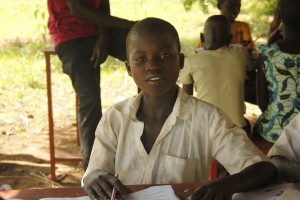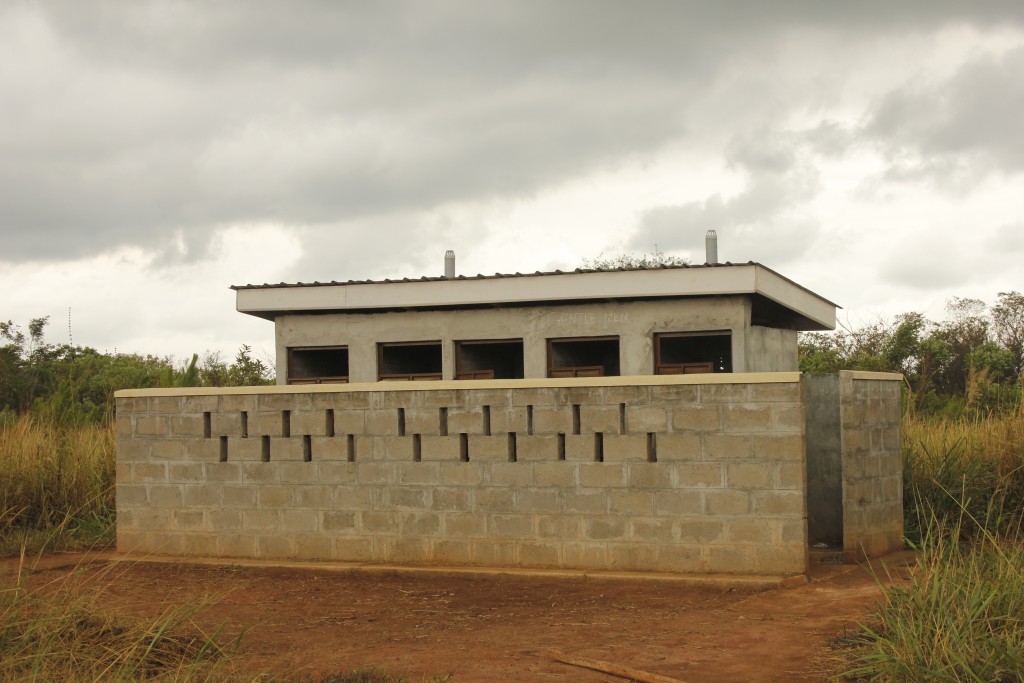A Message from new Interim CEO Jonathan
May 10, 2016Dear Friends,
 It’s great to have the chance to write to everyone connected with African Revival at this time. I’m coming to the end of my first month as Interim CEO and the last four weeks have been interesting, challenging and not a little surprising for many different reasons! I think my biggest surprise was the wonderful AR Golf Day that took place on 21st April at the beautiful Warren Estate in the heart of Essex. We had 60+ guests join us not just for the enjoyment of a day’s golf, but there was also an opportunity to present the work of AR to a group of supporters and potential new supporters. We were very fortunate to have the run of the whole estate as a result of our links with the Utley Foundation, who kindly sponsored our day alongside Ambant, a UK insurance company.
It’s great to have the chance to write to everyone connected with African Revival at this time. I’m coming to the end of my first month as Interim CEO and the last four weeks have been interesting, challenging and not a little surprising for many different reasons! I think my biggest surprise was the wonderful AR Golf Day that took place on 21st April at the beautiful Warren Estate in the heart of Essex. We had 60+ guests join us not just for the enjoyment of a day’s golf, but there was also an opportunity to present the work of AR to a group of supporters and potential new supporters. We were very fortunate to have the run of the whole estate as a result of our links with the Utley Foundation, who kindly sponsored our day alongside Ambant, a UK insurance company.
The result was a great return for AR and a number of new connections who are interested in the work we are undertaking in Uganda and Zambia. And it is to those two countries that I am travelling very shortly to see our work on the ground for the first time; it will be encouraging to see the impact that we are having on the lives of ordinary people – especially the young – at a community level in Africa. For of course, AR is all about people whether children in a southern Zambian school that need a new classroom or parents of local school children in a remote region of northern Uganda who are involved in one of our innovative school garden projects.
We are enormously grateful for all the support that we receive from individuals and groups in this country and are also privileged to link with marvellous partners in Africa. So we become a channel of support for those in Africa with whom we partner. But this channel doesn’t just flow one way; for all of us in AR there is a continuous stream of lessons that we learn from those on the ground and this mutual process of support and learning enables all of us to achieve something special in our different areas of involvement.
So thank you for your continuing support during this coming year and if you ever want to know more, please don’t hesitate to give us a call in the office.
Warm greetings,
Jonathan Hett
Posted in News | Leave a commentIntroducing Speed School!
May 5, 2016
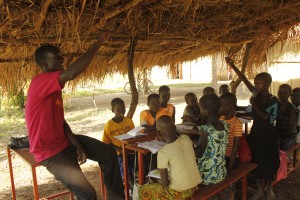 In rural Nwoya district, Northern Uganda, many children are not in school. Some have dropped out – others have never been to school at all. The reasons for dropping out are myriad. Some families do not have enough money to pay the fees for multiple children at school, as well as school uniform and scholastic materials. Other children are required to stay at home to care for sick relatives or help with household chores.
In rural Nwoya district, Northern Uganda, many children are not in school. Some have dropped out – others have never been to school at all. The reasons for dropping out are myriad. Some families do not have enough money to pay the fees for multiple children at school, as well as school uniform and scholastic materials. Other children are required to stay at home to care for sick relatives or help with household chores.
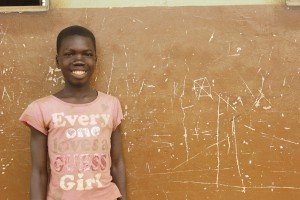 Molly (right) is one young girl who, at 13 years old, had never been to school until she enrolled in Speed School. Her uncle, who she lives with, did not allow her to go to school; instead she stayed at home to do most of the cooking and cleaning. And hers is not an isolated case. Sarah, also 13, had to drop out of school when her father spent all the money meant for school fees on the bride price for Sarah’s step mother. Paying dowry is still a tradition in northern Uganda and often impoverishes families. After the money had been used on his new bride, Sarah’s father asked her and her 4 siblings to stay at home until he found the money for their education. 3 are now enrolled in Speed School, which is a free initiative.
Molly (right) is one young girl who, at 13 years old, had never been to school until she enrolled in Speed School. Her uncle, who she lives with, did not allow her to go to school; instead she stayed at home to do most of the cooking and cleaning. And hers is not an isolated case. Sarah, also 13, had to drop out of school when her father spent all the money meant for school fees on the bride price for Sarah’s step mother. Paying dowry is still a tradition in northern Uganda and often impoverishes families. After the money had been used on his new bride, Sarah’s father asked her and her 4 siblings to stay at home until he found the money for their education. 3 are now enrolled in Speed School, which is a free initiative.
The reasons why children have dropped out of school are complex and difficult to address. But now a new initiative called Speed School, implemented by African Revival in partnership with Geneva Global, is aiming to get these drop outs back into school. The Speed School programme was previously implemented by Geneva Global in Ethiopia. The project was such a success that it was brought to Uganda and adapted to the national education system. African Revival is now managing 30 Speed School classes, each with 25 pupils. Over one year, we aim to educate and reintroduce 750 pupils into mainstream education and address the root causes of primary school drop outs and absenteeism.
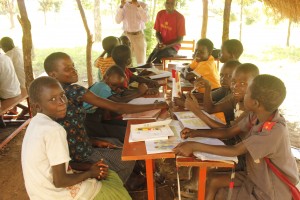 Speed School is an accelerated learning programme which will teach children the first 3 years of the primary curriculum, after which they will re-join the formal education system in Grade 4. Children are taught using effective participatory and child-centred learning methods which the Speed School teachers (called facilitators) learned during an intensive training session at the start of the project. The facilitators are also taught different ways to lesson plan, make learning aids, and encouraged to place an emphasis on critical thinking skills in class. Reduced class sizes of 25 pupils (the average teacher-pupil ratio in government schools is 1:80) also makes classes easier to manage and improves behaviour and pupil motivation. Moreover, the facilitators are from the local community, so as well as teaching the condensed curriculum, they can also monitor their pupils to ensure that they stay in Speed School and do not drop out again.
Speed School is an accelerated learning programme which will teach children the first 3 years of the primary curriculum, after which they will re-join the formal education system in Grade 4. Children are taught using effective participatory and child-centred learning methods which the Speed School teachers (called facilitators) learned during an intensive training session at the start of the project. The facilitators are also taught different ways to lesson plan, make learning aids, and encouraged to place an emphasis on critical thinking skills in class. Reduced class sizes of 25 pupils (the average teacher-pupil ratio in government schools is 1:80) also makes classes easier to manage and improves behaviour and pupil motivation. Moreover, the facilitators are from the local community, so as well as teaching the condensed curriculum, they can also monitor their pupils to ensure that they stay in Speed School and do not drop out again.
As well as Speed School classes, Geneva Global have also established self-help groups for the parents of the enrolled pupils. In these groups parents – primarily mothers – will be trained in Income Generating Activities to economically empower them so they are able to meet the financial demands of educating their children. These activities may include Village Savings and Loans Associations (VSLA), agriculture or business activities.
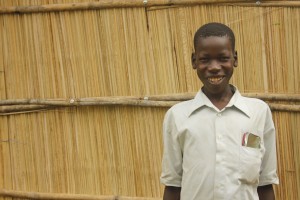 By ensuring the parents are empowered economically, the Speed School programme aims to address one of the main reasons why children dropped out of school in the first place: lack of money for school fees. Even if parents want their children to gain an education, school is not always a priority. Richard, a bright-eyed 13 year-old, dropped out of school in 2012 because both of his parents had died. He now lives with his grandmother, and has a hand-to-mouth existence: his grandmother is frail and can only generate enough money to feed Richard. No money is left for school fees. But now Speed School is helping Richard to study again and get an education, so one day he can achieve his dream of becoming a pilot: “I want to be a pilot so I can move in different places, and learning ways of living and different cultures”. Motivated and focus, we are sure Richard, along with the other children in Speed School, will excel this year in this supportive programme and go on to succeed in the future.
By ensuring the parents are empowered economically, the Speed School programme aims to address one of the main reasons why children dropped out of school in the first place: lack of money for school fees. Even if parents want their children to gain an education, school is not always a priority. Richard, a bright-eyed 13 year-old, dropped out of school in 2012 because both of his parents had died. He now lives with his grandmother, and has a hand-to-mouth existence: his grandmother is frail and can only generate enough money to feed Richard. No money is left for school fees. But now Speed School is helping Richard to study again and get an education, so one day he can achieve his dream of becoming a pilot: “I want to be a pilot so I can move in different places, and learning ways of living and different cultures”. Motivated and focus, we are sure Richard, along with the other children in Speed School, will excel this year in this supportive programme and go on to succeed in the future.
Goodbye Lily!
April 29, 2016 Today we say goodbye to our fabulous volunteer, Lily Kelly-Tarrant. Lily has been volunteering with us in the UK office since November 2015 and in that time, she has supported us on a huge number of different areas from fundraising and communications, to admin and events – not to mention our annual Golf Day! And not that we were counting, but she also managed to write 74 funding applications in her time with us – amazing!
Today we say goodbye to our fabulous volunteer, Lily Kelly-Tarrant. Lily has been volunteering with us in the UK office since November 2015 and in that time, she has supported us on a huge number of different areas from fundraising and communications, to admin and events – not to mention our annual Golf Day! And not that we were counting, but she also managed to write 74 funding applications in her time with us – amazing!
 Lily has been an integral part of the AR team for the last few months an absolute pleasure for us all to work with.
Lily has been an integral part of the AR team for the last few months an absolute pleasure for us all to work with.
We wish her all the best as she returns to Sussex University to complete her undergraduate degree in International Development for what is surely just the start of a glittering career in development!
Thank you Lily 🙂
Posted in News | Leave a comment
Seeds At The Ready
April 28, 2016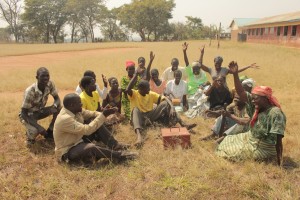 In Northern Uganda, the rainy season starts in April. When the rains start, farmers begin planting their crops. For the pupils and parents involved in our School Garden programme, the beginning of the year is the time to reflect and plan for the next growing season.
In Northern Uganda, the rainy season starts in April. When the rains start, farmers begin planting their crops. For the pupils and parents involved in our School Garden programme, the beginning of the year is the time to reflect and plan for the next growing season.
Lujuro Primary School learnt recently that onions withstand drought and last season, they made £280 from selling onions. Over the last year, the 15 primary schools we work with made a total of £1,640 from selling school garden produce and saved an amazing £3,920 in their Village Savings and Loans Associations. We have high hopes for this growing season!
Posted in News | Leave a commentSchool Enterprise Challenge Comes To Amuru District
April 28, 2016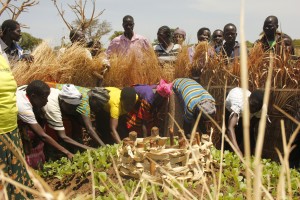 15 of African Revival’s partner schools in Northern Uganda have registered for the Teach a Man to Fish School Enterprise Challenge. To take part in the challenge, African Revival’s Pupil Farmer Clubs develop and submit a business plan and get feedback, before launching their idea at school!
15 of African Revival’s partner schools in Northern Uganda have registered for the Teach a Man to Fish School Enterprise Challenge. To take part in the challenge, African Revival’s Pupil Farmer Clubs develop and submit a business plan and get feedback, before launching their idea at school!
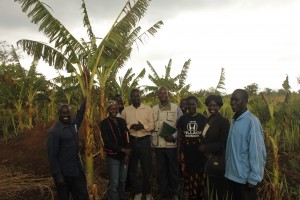 We will give them lots of support as they design and set up their school businesses growing and selling produce. The challenge is a fun way for pupils to learn practical transferable skills in farming and business – as well as raise some income for their school!
We will give them lots of support as they design and set up their school businesses growing and selling produce. The challenge is a fun way for pupils to learn practical transferable skills in farming and business – as well as raise some income for their school!
Meet Vincent!
April 28, 2016 “My role as Construction Coordinator at African Revival involves designing and costing new structures. I do the process of tendering, acquiring the contractors, taking them through the sites, supervising the work, checking quality, following up the payment process, and liaising with the District Government.”
“My role as Construction Coordinator at African Revival involves designing and costing new structures. I do the process of tendering, acquiring the contractors, taking them through the sites, supervising the work, checking quality, following up the payment process, and liaising with the District Government.”
“I enjoy the design side of my job and I prefer working with community schools. At Government schools you work with existing designs approved by the Ministry of Education. But at community schools, you come up with your own design, present it to management, present it to the District Government, and when you come out successfully at the end, you feel good about it.”
Our construction plans for the next 3 months include:
- Raising funds for a classroom block, classroom refurbishment and teacher accommodation at Anaka P7 Primary School
- Raising funds for teacher accommodation at Juba Road Primary School
Want to know more? Get in touch! 020 8939 3190|info@africanrevival.org
Posted in News | Leave a comment750 Children Catch Up On School
April 28, 2016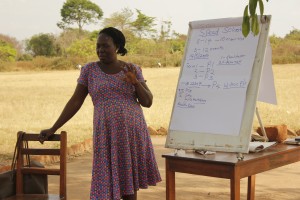 Last month, we launched our new Speed Schools programme with new partner, Geneva Global. Speed Schools is an accelerated learning programme for children who have missed out on a lot of schooling. In just 10 months, we will take 750 children through the curriculum they have missed during the first three years of primary school! This means that by the start of the next academic year (February 2017), they will be able to join Year 4 of mainstream primary school.
Last month, we launched our new Speed Schools programme with new partner, Geneva Global. Speed Schools is an accelerated learning programme for children who have missed out on a lot of schooling. In just 10 months, we will take 750 children through the curriculum they have missed during the first three years of primary school! This means that by the start of the next academic year (February 2017), they will be able to join Year 4 of mainstream primary school.
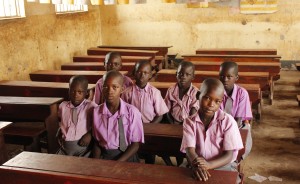 In May, we’ll be taking a closer look at the programme with updates, interviews and articles. Watch this space for an introduction to our two new Speed Schools staff, Phillip and Lucy, and hear more from the children and parents involved!
In May, we’ll be taking a closer look at the programme with updates, interviews and articles. Watch this space for an introduction to our two new Speed Schools staff, Phillip and Lucy, and hear more from the children and parents involved!
Our most successful Golf Day to date!
April 27, 2016 On Thursday 21st of April, African Revival hosted a another very successful annual Golf Day. Sixteen teams of four worked their way around the stunning 18 hole course at the Warren Estate in Essex, with many players also participating in our ‘Yellow Ball’ and ‘Hit the Green’ competitions.
On Thursday 21st of April, African Revival hosted a another very successful annual Golf Day. Sixteen teams of four worked their way around the stunning 18 hole course at the Warren Estate in Essex, with many players also participating in our ‘Yellow Ball’ and ‘Hit the Green’ competitions.
The day started smoothly as the Warren Estate staff welcomed our staff and volunteers to the clubhouse. Every effort had been made to make the event a success. Each golf team was assigned two buggies to get them around the course, and after some bacon rolls and a short introductory speech from our host Steve Mcpherson, the players teed off at 12.30pm.
The golf was followed by a delicious three course meal along with a prize-giving for the day’s winners – congratulations to Academy Insurance for the second year in a row! – and a live and silent auction. We had an array of excellent lots very kindly donated by our supporters, including a week in a luxury South African Golf resort, signed memorabilia by golf stars Arnold Palmer, Jack Nicklaus and Gary Player and even tickets to see England’s football team play Malta at Wembley stadium.
 The only ‘blip’ of the day was when our auctioneer accidentally drove to the wrong venue – 75 miles away! Fortunately, our founder Tony Allen and long-term African Revival supporter David Rasche very kindly stepped in as our impromptu auctioneers and, despite their lack of auctioneering experience, were a great success;
The only ‘blip’ of the day was when our auctioneer accidentally drove to the wrong venue – 75 miles away! Fortunately, our founder Tony Allen and long-term African Revival supporter David Rasche very kindly stepped in as our impromptu auctioneers and, despite their lack of auctioneering experience, were a great success;
With a grand total of £17,500, this year’s Golf Day has been the most successful to date!
 We could not have achieved this without all the incredible people who supported us in the run-up to the Golf Day, and on the day itself. First of all we would like to thank the Warren Estate for hosting our event, and thank you especially to the kind and supportive staff who worked tirelessly throughout the day to ensure we had everything we needed. Thank you to Ambant who were our sponsors on the day. Thank you to all the teams who came along, and to the players who participated in the ‘Yellow Ball’ and ‘Hit the Green’ challenges – sorry the wind wasn’t in your favour!
We could not have achieved this without all the incredible people who supported us in the run-up to the Golf Day, and on the day itself. First of all we would like to thank the Warren Estate for hosting our event, and thank you especially to the kind and supportive staff who worked tirelessly throughout the day to ensure we had everything we needed. Thank you to Ambant who were our sponsors on the day. Thank you to all the teams who came along, and to the players who participated in the ‘Yellow Ball’ and ‘Hit the Green’ challenges – sorry the wind wasn’t in your favour!
 A huge thank you to also the Utley Foundation (and to Neil Utley himself) and to Steve McPherson who was instrumental in the planning and running of the event. We would also like to thank Ian Clark. who has attended countless African Revival events and supported a number of our projects, for making such a good speech on the night. Thank you also to African Revival’s incredible volunteers on the day – you made it happen!
A huge thank you to also the Utley Foundation (and to Neil Utley himself) and to Steve McPherson who was instrumental in the planning and running of the event. We would also like to thank Ian Clark. who has attended countless African Revival events and supported a number of our projects, for making such a good speech on the night. Thank you also to African Revival’s incredible volunteers on the day – you made it happen!
Last but not least, we wouldn’t have had such a successful auction without the amazing auction prizes we had so generously donated, so thank you to all those who supported us with those; Steve and Liz Quinn, Tony Allen, Brian King, Kevin Munn, Academy Insurance, Steve McPherson, Texel, Supercar Drive Days Ltd., Open GI, Auto Protect, the Warren Estate, Mrs M P Codrington and Mr E A Codrington, and David Rasche. Your generosity was invaluable. And of course, we couldn’t have done it without our incredible last-minute auctioneers – thank you Tony and David.
As we tie up the last post-event details, we look forward to next year’s Golf Day and to welcoming back many familiar faces for another day’s fundraising in aid of African Revival.
See you there!
Posted in News | Leave a comment
How well-designed classrooms contribute to a quality education!
April 13, 2016The classroom environment can improve students’ academic performance by 25% according to a recent study conducted by the University of Salford.
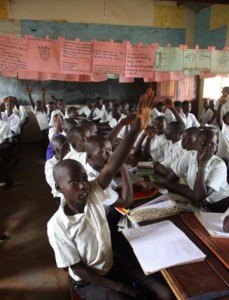 Over the last 10 years, African Revival has been working to improve the quality of teaching and learning at primary schools in Uganda and Zambia. We also provide facilities which improve access to education and are conducive to learning. Schools in northern Uganda were targeted by rebel forces during the 20 year insurgency by the Lord’s Resistance Army. School infrastructure was destroyed and many children missed out on access to education. In the decade since peace was restored, we’ve learnt a thing or two about classroom construction.
Over the last 10 years, African Revival has been working to improve the quality of teaching and learning at primary schools in Uganda and Zambia. We also provide facilities which improve access to education and are conducive to learning. Schools in northern Uganda were targeted by rebel forces during the 20 year insurgency by the Lord’s Resistance Army. School infrastructure was destroyed and many children missed out on access to education. In the decade since peace was restored, we’ve learnt a thing or two about classroom construction.
Vincent Komakech, based at our Gulu office in Uganda, has been African Revival’s Construction Project Coordinator for 3 years. Vincent has given us his expert opinion on the design of quality classrooms suited to the local environment.
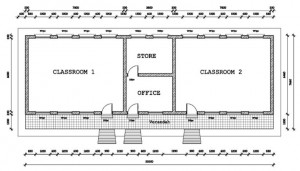 Orientation
Orientation
Firstly, orientation of the building is key. Typically, classrooms are a long oblong shape with windows running along the two longer walls. Building a classroom so that the two windowless walls face East and West means that no direct sunlight will penetrate the windows. This avoids the distraction of sunlight in pupils’ and teachers’ eyes at the beginning and end of the day as the sun rises and sets.
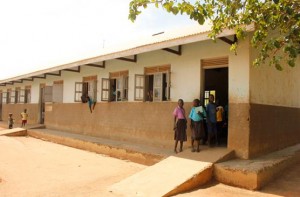 Durability and Insulation
Durability and Insulation
Secondly, the materials used to build and roof a classroom should be durable and strong enough to withstand wear and tear over time. Classrooms are built to last approximately 30-40 years, but ideally longer before having to be repaired or replaced. Depending on the individual school, classrooms need to hold anything between 30 to 90 students at one time so buildings also need to be a substantial size.
Some government funded secondary schools are built with insulation to reflect heat away from the building, helping to keep it cooler and more conducive to learning. Adding extra layers of plaster to the roof can also muffle the sound of heavy rains which fall between April and September. Unfortunately, such insulation is not used in the construction of most primary school classrooms often due to budget constraints. This makes teaching and learning effectively that much harder in the rainy season.
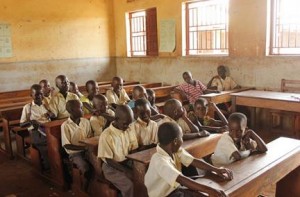 Light and Ventilation
Light and Ventilation
Ideally, windows should be large enough to allow adequate ventilation and light. With no access to electricity being the norm at most of the schools we work with, natural daylight is used as essential lighting in classrooms. Air should also be able to flow in and out allowing for a breeze to pass through the classrooms, so windows are purposefully not fitted with glass. Temperatures in northern Uganda can regularly reach over 30 degrees Celsius in the dry season, so a breeze is keenly welcomed by pupils and teachers!
 Windows Where possible, windows should be lined with insect-proof screens, similar to mosquito nets but more solid and durable. These not only prevent small insects from using the classroom as a home, but also birds and bats which may leave behind unwanted debris and smells. Small animals may also damage the roofing meaning that is has to be replaced sooner. Using these screens prevents damage caused by animals, making the classrooms more durable in the long term. Windows should also be placed high enough in the wall so that when a student is sat at a desk they cannot be distracted by what is going on outside. Simple ideas such as this can help improve the focus and concentration of students in class.
Windows Where possible, windows should be lined with insect-proof screens, similar to mosquito nets but more solid and durable. These not only prevent small insects from using the classroom as a home, but also birds and bats which may leave behind unwanted debris and smells. Small animals may also damage the roofing meaning that is has to be replaced sooner. Using these screens prevents damage caused by animals, making the classrooms more durable in the long term. Windows should also be placed high enough in the wall so that when a student is sat at a desk they cannot be distracted by what is going on outside. Simple ideas such as this can help improve the focus and concentration of students in class.
 Walls and Floors
Walls and Floors
Finally, walls and floors should be easy to clean so that a hygienic and attractive environment is maintained. Vincent describes “walls that talk to the learning students” by which he means wall surfaces which teachers can decorate with posters, slogans and pictures. Doors with a strong lock should also be installed so that classrooms and their contents are secure when not in use.
“These are some of the features that I think are worth considering for a good classroom… If you have good classrooms with some of the features I’ve suggested, I’d like to think concentration levels would go up for the learners. The teachers will not have interferences with their lessons. That means the contact hours that are planned for each syllabus should be accomplished in time. It can provide room for revision, and remedial lessons. Most of the syllabus can be finished by say, the beginning of the third term, and you have time for remedial lessons and revision, then definitely the performance of the students should improve.”
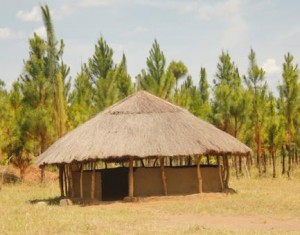 Many of Vincent’s recommendations are included in the design given to government-supported schools by the Ugandan Ministry of Education. However, many rural primary schools are not given any funding or support from the government. This means that their budgets for classrooms are very limited. Often classrooms will be in the form of round mud brick huts with thatched roofs. These classrooms tend to be paid for and built by parents, the PTA and School Management Committees. These buildings need constant maintenance and are likely to leak in heavy rains which makes teaching and learning more difficult.
Many of Vincent’s recommendations are included in the design given to government-supported schools by the Ugandan Ministry of Education. However, many rural primary schools are not given any funding or support from the government. This means that their budgets for classrooms are very limited. Often classrooms will be in the form of round mud brick huts with thatched roofs. These classrooms tend to be paid for and built by parents, the PTA and School Management Committees. These buildings need constant maintenance and are likely to leak in heavy rains which makes teaching and learning more difficult.
Over the last 3 years African Revival has supported 57 schools in Uganda & Zambia in a variety of ways. In terms of construction work we have built 4 classrooms, 2 teachers’ houses, 4 toilet blocks, 1 girl’s dormitory and refurbished a library. We hope that with the generous support of our donors we will be able to provide more quality classrooms and other school buildings to schools which are seriously lacking in facilities. Some schools have such high enrolment rates that there may be over 90 students in a classroom built for just 45. With more well-designed classrooms, schools can provide more students with a quality education.
If you’d like to contribute to the construction of a classroom, or another school building, please do get in touch on 020 8939 3190 or info@africanrevival.org
Posted in News | Leave a comment
The Toilet Question
April 13, 2016Everything you ever wanted to know about latrines but didn’t want to ask
What’s the difference between a toilet and a latrine?
A latrine is a type of toilet. The term latrine is usually used to describe something simpler and more basic than a flushing toilet.
Are there different types of latrines?
The most common type of latrine is a pit latrine. A pit latrine usually consists of a deep hole in the ground (the pit), a concrete slab for the floor with a small hole that leads down to the pit, and a shelter. Pit latrines are built away from residences and away from water sources, to avoid contamination.
 A drainable latrine is a pit latrine that can be emptied. The walls of the pit are lined with brick or cement and the pit is part-filled with water. A pipe leads from outside the latrine to inside the pit. A cesspit emptier can connect to this pipe to drain the waste. With a drainable latrine, it is important to only drop materials into the pit that can decompose. Other materials will block the pipe.
A drainable latrine is a pit latrine that can be emptied. The walls of the pit are lined with brick or cement and the pit is part-filled with water. A pipe leads from outside the latrine to inside the pit. A cesspit emptier can connect to this pipe to drain the waste. With a drainable latrine, it is important to only drop materials into the pit that can decompose. Other materials will block the pipe.
An eco latrine enables human waste to be used as fertiliser. It separates solid human waste (faeces) and liquid waste (urine). The solid waste is collected in a pit where it dries and decomposes. The drying process kills pathogens, leaving it safe to use to improve soil. Meanwhile urine is collected separately and can be used in the creation of fertiliser. This kind of latrine is also called a urine-diverting dry toilet.
Which type of latrine is the best?
Flushing toilets are dependent on the availability of water. Latrines are cheaper to construct and can be used even during water shortages. But each type of latrine has its advantages and disadvantages.
 Pit latrines are the cheapest and easiest to construct. But a 5-cubicle pit latrine block at a primary school in Northern Uganda might fill up after 2 years. After this time, the school will need to bury the old pit and dig a new pit and construct a new shelter.
Pit latrines are the cheapest and easiest to construct. But a 5-cubicle pit latrine block at a primary school in Northern Uganda might fill up after 2 years. After this time, the school will need to bury the old pit and dig a new pit and construct a new shelter.
Drainable latrines are more expensive to build but last longer. A drainable latrine at a primary school may need to be emptied after 2 years. But as long as the walls are well built, the structure could last over 15 years until any major maintenance is needed. The school also needs to make sure pupils understand what they can and cannot drop into the pit.
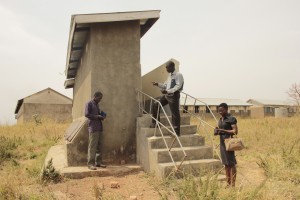 Eco latrines are the most sustainable as they allow the waste to be turned into something useful. But eco latrines are still a relatively new idea. School communities need to get used to the idea of reusing human waste before they can begin to use them. When visiting primary schools in Northern Uganda, African Revival’s Construction Coordinator recommends drainable latrines or eco latrines. They last longer, they are safer, and they are more space efficient.
Eco latrines are the most sustainable as they allow the waste to be turned into something useful. But eco latrines are still a relatively new idea. School communities need to get used to the idea of reusing human waste before they can begin to use them. When visiting primary schools in Northern Uganda, African Revival’s Construction Coordinator recommends drainable latrines or eco latrines. They last longer, they are safer, and they are more space efficient.
Which type of latrine is the most popular in Northern Uganda?
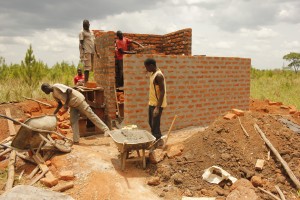 Pit latrines are the most popular in Northern Uganda. In rural areas, community members can dig a pit, place logs over the pit to act as the floor, and construct a shelter with mud and a grass thatch roof – all traditional and locally available materials.
Pit latrines are the most popular in Northern Uganda. In rural areas, community members can dig a pit, place logs over the pit to act as the floor, and construct a shelter with mud and a grass thatch roof – all traditional and locally available materials.
How much does it cost to build a latrine?
A 5-cubicle pit latrine block with brick walls costs around £3,000. A 5-cubicle drainable latrine block costs a little over £5,000.
What is improved sanitation?
 Improved sanitation facilities ensure a hygienic separation of human waste from human contact. Pit latrines with a slab for the floor, drainable latrines, eco latrines, and flushing toilets all count as improved sanitation facilities.
Improved sanitation facilities ensure a hygienic separation of human waste from human contact. Pit latrines with a slab for the floor, drainable latrines, eco latrines, and flushing toilets all count as improved sanitation facilities.
2.4 billion people worldwide do not have access to improved sanitation (WHO 2015). This means they use latrine facilities that do not hygienically separate human waste from human contact. This includes public latrine facilities, pit latrines without a slab for the floor, or they practice open defecation.
What is open defecation?
Open defecation is the practice of going to the toilet outside, for example in fields, forests, sewers, bushes, or bodies of water, rather than in a designated toilet. Almost 1 billion people worldwide practice open defecation (WHO 2015).
When open defecation is practiced in a densely populated area, it becomes a major public health issue. Open defecation can spread diseases such as diarrhoea, intestinal worms, typhoid and cholera. It can also pollute water sources and lead to the spread of waterborne diseases.
Do you have a question about what we do or a topic you would like us to cover?
Message us on Facebook, tweet us, leave a comment on this news update, or email us here.
Source: WHO (2015) http://www.who.int/mediacentre/factsheets/fs392/en/
Posted in News | Leave a comment

